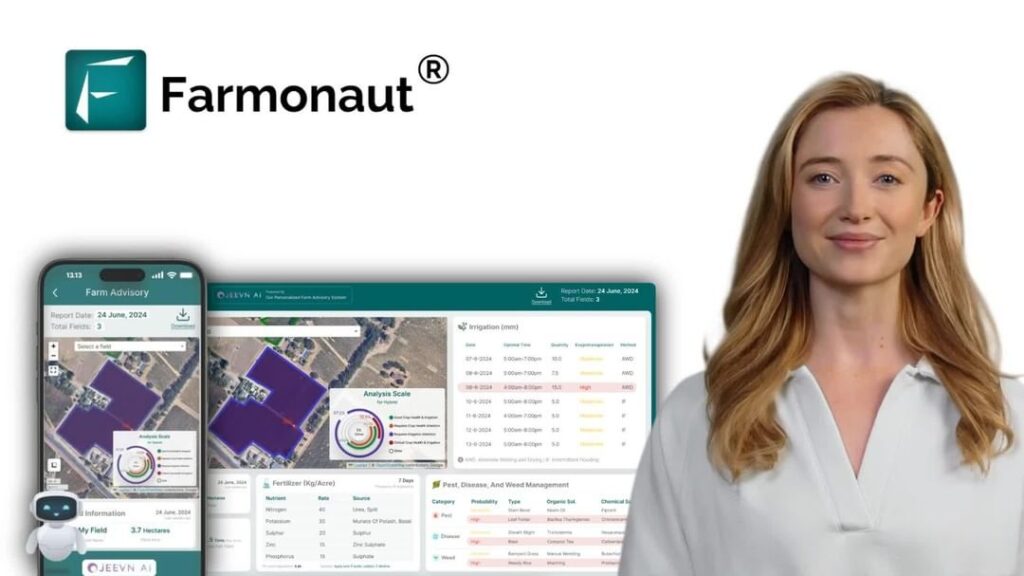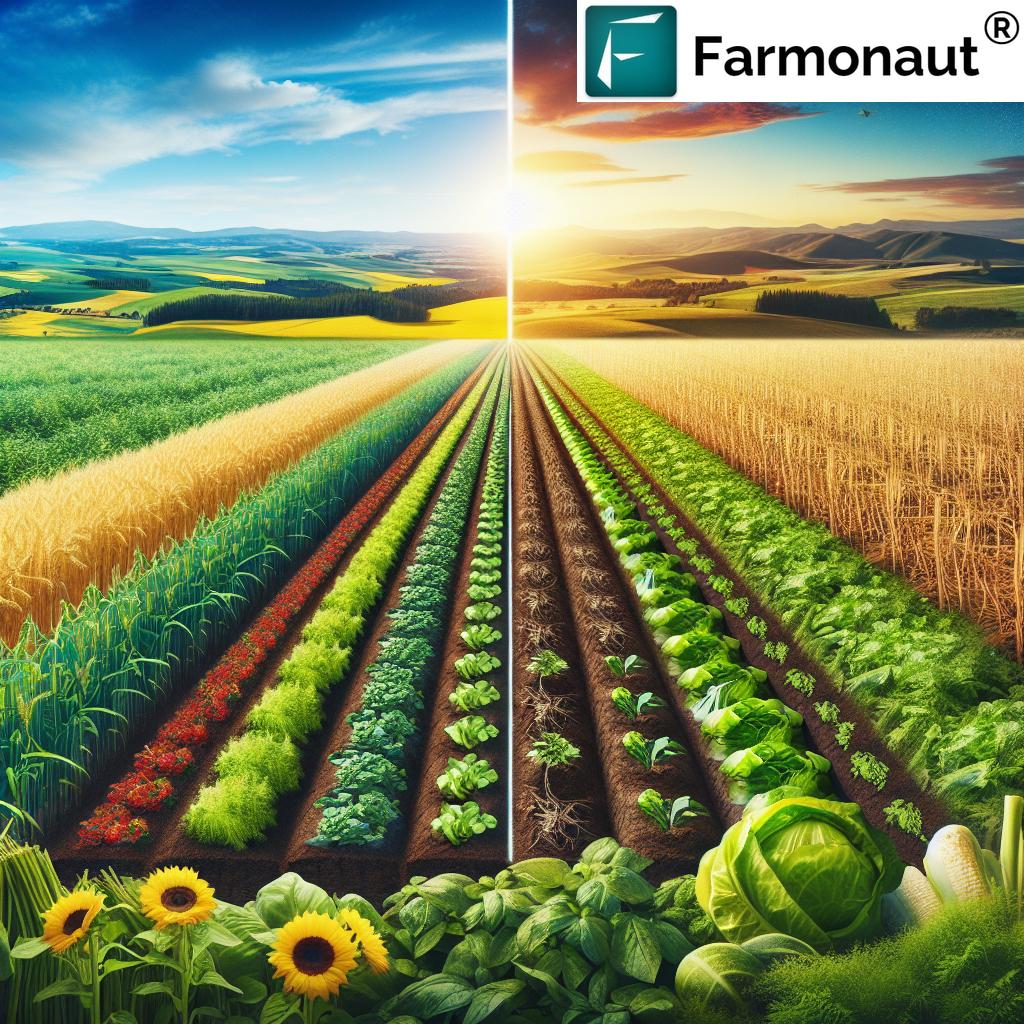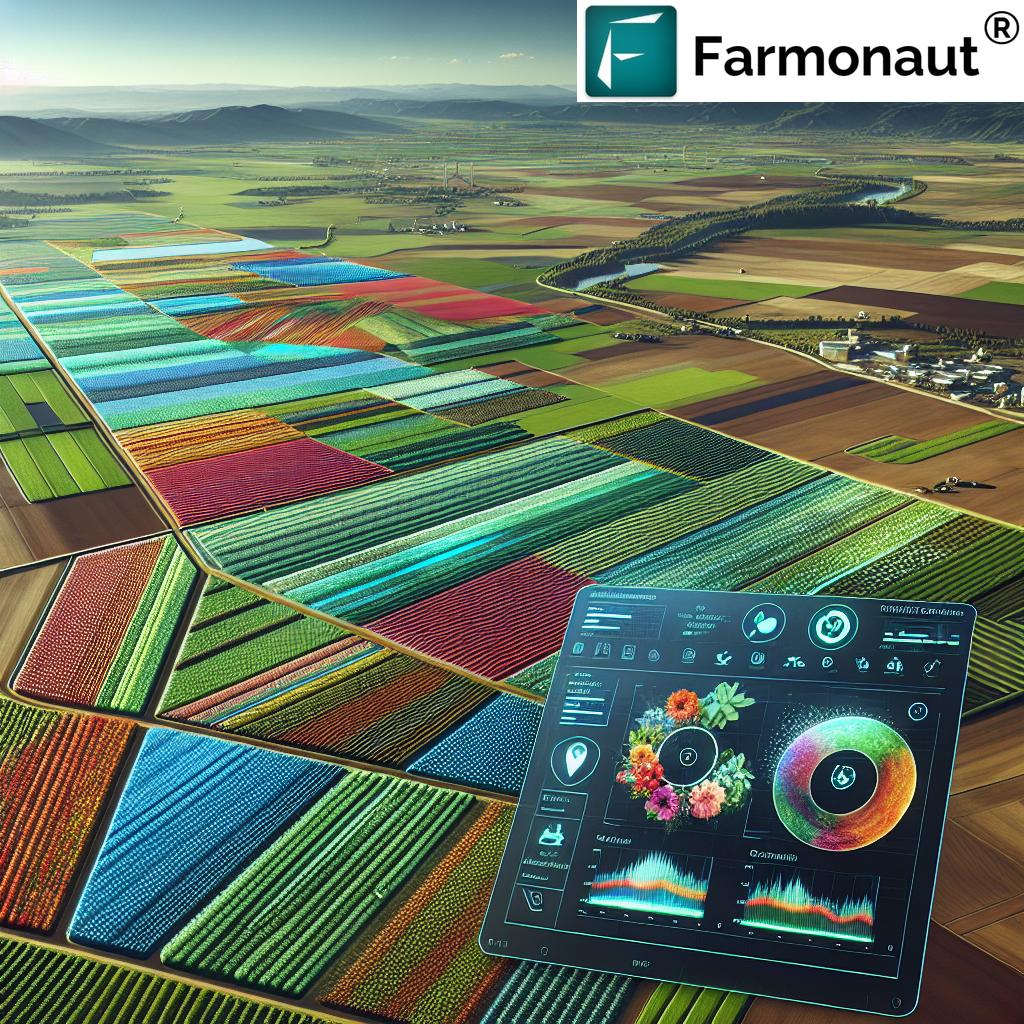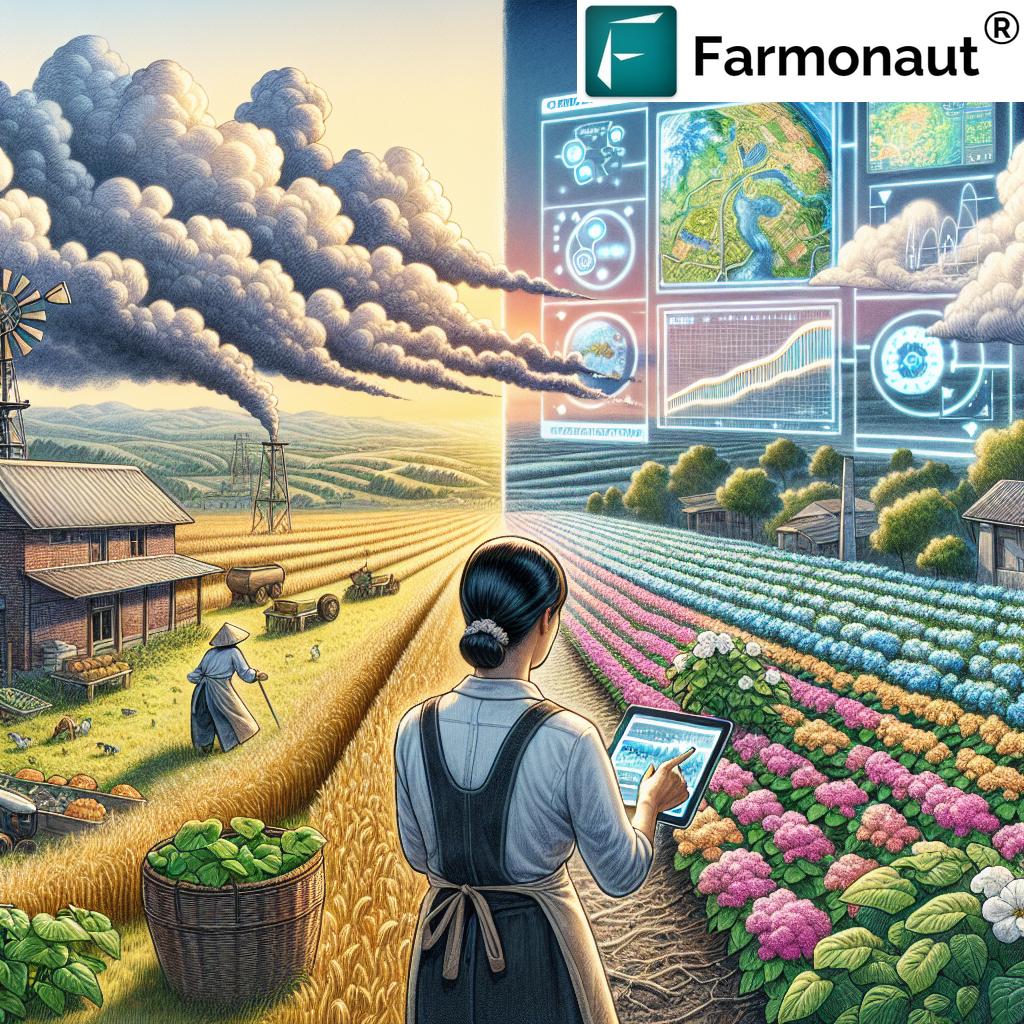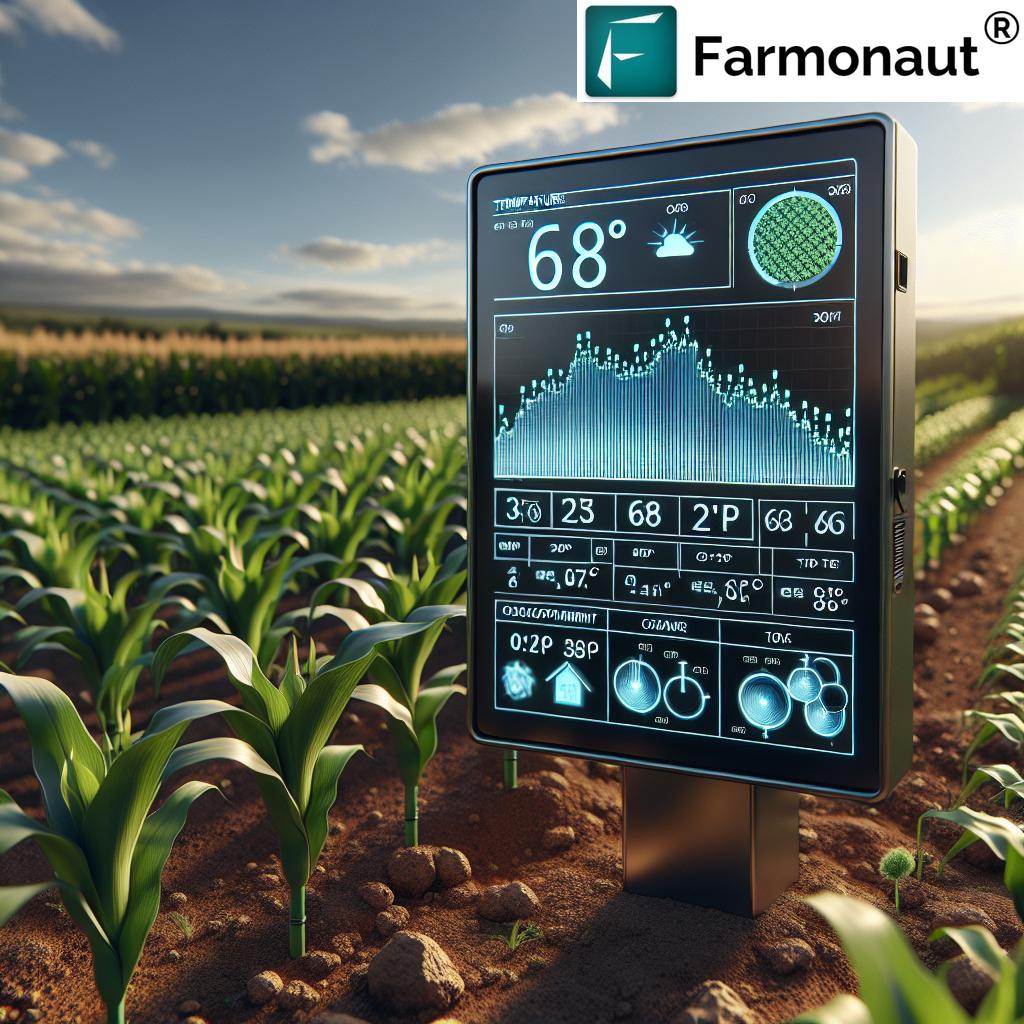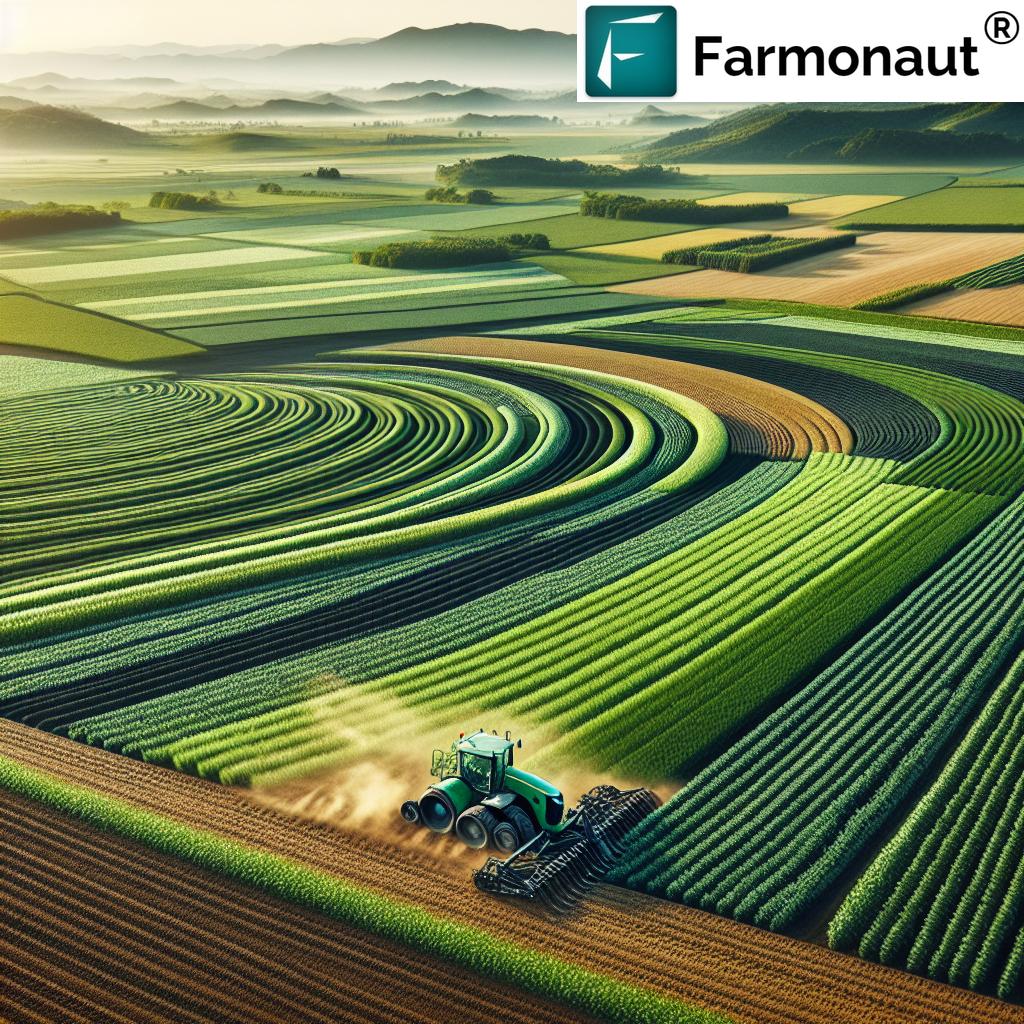Technical Farming Products & Skills: 2025 Tech in Farming
Meta: Technical farming products and skills are transforming agriculture. See how advanced technology, data, AI, and IoT drive sustainability and precision in 2025!
Table of Contents
- Summary: The Rise of Technical Farming – Shaping the Future of Agriculture
- Trivia: AI-Driven Precision Farming Stats 2025
- Defining Technical Farming in 2025
- Technical Farming Products: Amplifying Precision and Productivity
- Comparison Table: Top Technical Farming Products & Skills 2025
- Technical Rotation in Forestry: Data-Driven Land Management
- Enhancing Technical Skills in Agriculture
- Tech in Farming: Building Smart, Sustainable Ecosystems
- Farmonaut: Empowering Agriculture with Satellite Data, AI, and Blockchain
- Apps, APIs, and Resources for Modern Farmers
- Trivia: Technical Farming Sensors Impact 2025
- Frequently Asked Questions
- Conclusion: The Future of Technical Farming
Summary: The Rise of Technical Farming – Shaping the Future of Agriculture in 2025
As the global population continues to swell in 2025, and climate change introduces new uncertainty, agriculture faces unprecedented challenges. The sector must produce more food with fewer resources, all while meeting sustainability goals and minimizing environmental impact. To rise to these challenges, technical farming has emerged as a vital, data-driven solution—integrating technology, analytics, and scientific methods to reimagine productivity, crop and soil health, and resource efficiency.
Unlike traditional practices, technical farming employs satellites, IoT, AI, and advanced machinery, revolutionizing how we manage crops, livestock, and land. Precision products like smart irrigation systems, autonomous tractors, and soil health sensors increase yields, reduce wastage, and ensure sustainable practices. Meanwhile, technical rotation in forestry leverages geo-intelligence for responsible timber production without degrading ecosystems.
But the success of such advanced methods depends on enhancing technical skills in agriculture: the modern farmer must combine hands-on expertise with digital fluency and data literacy. From remote sensing to robotic harvesters, the 2025 landscape is profoundly shaped by innovation, enabling us to optimize every stage of food production—meeting global demand while protecting our natural balance for future generations.
“By 2025, over 60% of farms are predicted to use AI-driven precision farming technologies worldwide.”
Defining Technical Farming in 2025
Technical farming refers to the contemporary application of modern technology like satellite imagery, AI analytics, IoT sensors, and machine learning in farm operations. Whereas conventional agriculture relies on generalized and time-tested methods, technical farming employs precision, efficiency, and adaptability to optimize every aspect of agricultural production. Its core principles are:
- Data-driven decisions: Using real-time metrics from sensors, satellites, and weather data to inform planting, irrigation, and harvesting.
- Precision agriculture: Accurately managing inputs (water, fertilizer, pesticides) to the specific needs of plants and soils, minimizing wastage and environmental impact.
- Integration of smart technologies: Leveraging IoT, drones, AI, and advanced machinery for monitoring, automation, and proactive response.
- Continuous monitoring: Assessing crop health, soil conditions, and livestock wellbeing through a web of technical systems.
- Advanced genetics and biotech: Applying genetically enhanced seeds and bioengineering for resilience and stability in uncertain climates.
This revolution is not just about adopting new gadgets—it’s about fundamentally reshaping global food production, efficiency, and sustainability with science and technology as the backbone.
How Technical Farming Differs from Conventional Farming
- Conventional: Often generalized, less responsive to real-time crop or soil conditions, and more resource-intensive.
- Technical: Precise, adaptive, efficient, and sustainability-focused, using tools to increase yield, minimize waste, and provide real-time insights.
Learn how real-time satellite and AI monitoring systems enable technical farming (video above).
Technical Farming Products: Amplifying Precision and Productivity
Technical farming’s momentum is driven by remarkable technical farming products that transform input efficiency, crop health management, and sustainability. Below, we examine the essential innovations and their operations in the fields of 2025:
Smart Irrigation Systems
- Description: Automated sprinkler and drip systems linked to soil moisture sensors and precise weather forecasts.
- Benefits: Optimize water usage, conserve resources, and reduce labor through judicious, data-driven application of irrigation.
- 2025 Tech: Integration with satellite and AI advisories for microclimate-based scheduling.
Advanced soil moisture monitoring (see video above) helps reduce water wastage—a cornerstone technical farming product in sustainable agriculture.
Autonomous Tractors and Robotic Harvesters
- Description: GPS-driven machines that perform precision planting, weeding, and harvesting with minimal human intervention.
- Benefits: Reduce labor costs, ensure timely operations, and increase accuracy even under challenging weather or labor shortages.
- 2025 Tech: AI systems that adapt to variable field conditions in real time.
IoT and Smart Sensors
- Description: From ground-based sensors to weather stations and asset trackers, IoT technology collects real-time data on soil, crop, microclimate, and resource utilization.
- Benefits: Enable precision farming by tracking soil health, detecting pests/diseases early, and alerting for optimal harvesting periods.
- 2025 Tech: Interconnected platforms feed data to cloud AI for predictive analytics and resource optimization.
AI-Based Disease Detection & Predictive Analytics
- Description: AI models analyze field imagery (from drones/satellites/phones) to detect early signs of disease, nutrient deficiencies, or pest infestations.
- Benefits: Reduce crop loss, optimize input use, and enhance yield predictability.
- 2025 Tech: Integration with blockchain for tamper-proof traceability and data validation.
Check out Farmonaut’s blockchain-based traceability solutions for secure, transparent supply chains powered by real-time technical data.
Genetically Enhanced Seeds and Decision Support Tools
- Description: Advanced biotech seeds engineered for higher resilience, better water/nutrient use, and pest resistance.
- Benefits: Increased yield and stability under rapidly changing climate conditions, reducing need for chemical interventions.
- 2025 Tech: Decision support systems advise when and where to plant specific hybrids for climate-smart production.
Remote Sensing Drones and Satellite Data
- Description: UAVs and satellites capture high-resolution imagery, monitor crops, assess yields, and detect stress faster than ground surveys.
- Benefits: Enable large-scale, cost-effective monitoring even in remote regions; reduce scouting and sample bias.
- 2025 Tech: Cloud-based platforms with ML algorithms for instant insights, as offered by our (Farmonaut) monitoring tools.
See how AI like JEEVN AI transforms smart farming and technical skills in agriculture using real-time satellite data (above).
Comparison Table: Top Technical Farming Products & Skills 2025
| Technology/Product Name | Function/Application | Estimated Adoption Rate by 2025 (%) | Estimated Cost Range (USD) | Expected Impact on Yield (% Increase) | Relevance for Sustainability (1–5) |
|---|---|---|---|---|---|
| Remote Sensing Drones | Monitor crop health, pest/disease outbreaks, yield estimation | 52 | $1,000 – $7,000/unit | 10–18 | 4 |
| Autonomous Tractors | Automated planting, tilling, harvesting, crop management | 46 | $50,000 – $250,000/unit | 14–20 | 3 |
| Precision Irrigation Systems | Smart water application based on soil moisture/weather data | 67 | $500 – $10,000/system | 18–40 | 5 |
| AI-based Disease Detection | Analyze images/data to predict disease/pest risks early | 57 | $200 – $3,000/year (software, imagery) | 8–15 | 4 |
| Smart Sensors (IoT, Soil, Climate) | Continuous monitoring of soil, water, crop micro-environments | 62 | $100 – $2,000/unit | 11–25 | 5 |
| Biotech Seeds | Enhanced genetics for yield, resilience, climate adaptation | 39 | $140 – $350/acre | 15–33 | 3 |
In this technical farming landscape, products with the highest sustainability—like smart sensors and precision irrigation—boost productivity and minimize resource use, supporting both environmental and economic goals in 2025 and beyond.
Explore cutting-edge drone solutions changing global farming and crop monitoring in 2025.
Technical Rotation in Forestry: Data-Driven, Sustainable Land Management
Forestry and tree-based landscapes are undergoing their own technical rotation—replacing cyclical, generalized schedules with scientifically planned, data-driven methods. Here’s how modern technology is reshaping sustainable forest management:
- Remote Monitoring: Satellite and drone imagery track forest health, regrowth rates, and biodiversity seamlessly across vast areas.
- Technical Rotation Planning: AI and GIS tools identify optimal periods for planting and harvesting based on current tree growth, soil conditions, and weather data—ensuring peak yields with minimal environmental impact.
- Resource Conservation: Monitoring of humidity, carbon sequestration, and pest risks fosters ecological balance and supports climate-smart management cycles.
- Sustainability: Such technical farming products minimize over-harvesting, allow for biodiversity corridors, and enhance regeneration even as demand for forest products rises.
Discover how carbon farming and soil health monitoring (above) empower balanced, sustainable land use in 2025.
For advanced forest and plantation advisory, explore our (Farmonaut) crop plantation & forest advisory platforms—delivering real-time satellite insights for enhanced, sustainable forestry management.
Enhancing Technical Skills in Agriculture for the Future
Amid all the sophisticated hardware and AI, skilled human expertise anchors the future of farming. Technical skills in agriculture now go far beyond fieldwork. Farmers worldwide are training to operate data analytics tools, interpret remote sensing imagery, and leverage digital platforms for decision making.
- Digital Literacy: Understanding and applying analytics, satellite/IoT data, and cloud-based dashboards for day-to-day operations.
- AI & Remote Sensing: Reading NDVI images, interpreting soil health indices, and using AI-driven advisories (like Jeevn AI) for proactive management.
- Operating Automated Machinery: Skilled operation and troubleshooting of autonomous tractors, drones, and irrigation systems.
- Resource Management: Using software platforms (such as our fleet management tools) to optimize vehicle, equipment, and manpower usage across extensive farm and plantation operations.
- Financial and Compliance Skills: Navigating digital records for crop insurance, carbon credit monitoring, and traceability to meet evolving regulatory requirements.
This video demonstrates the pivotal role of satellite crop health monitoring in building skills for smart, technical farming.
Agricultural education and extension programs are evolving globally—prioritizing technical skills in curriculum and facilitating on-farm training so that new generations of farmers remain ahead in sustainability, productivity, and efficiency.
Tech in Farming: Building Smart, Sustainable Ecosystems
The defining feature of tech in farming is not stand-alone gadgets but the interconnection of data, people, and platforms into a smart ecosystem that constantly adapts to changing field conditions.
Key Elements of a Smart Farming Ecosystem in 2025:
- IoT Integration: Soil moisture, weather, and climate stations feeding live data into cloud systems.
- AI-Driven Decision Support: AI models process millions of data points, providing actionable insights (from harvest dates to fertilizer plans).
- Autonomous Operations: Automated tractors, robotic harvesters, and smart irrigation running in sync with data advisories—reducing labor while boosting yield.
- Remote Monitoring via Satellite: Large farms and institutions leverage satellite-based solutions (like our large-scale farm management platform) for effortless oversight and compliance monitoring.
- Digital Marketplaces & Blockchain: Securely connect producers, processors, and consumers, improving traceability and transparency across the food supply chain (see Farmonaut’s blockchain-based traceability solution).
- Environmental Monitoring: Carbon footprint and ecological metrics inform responsible management, as offered by our carbon footprinting tools.
Discover how precision tech and AI ecosystems drive harvesting, sustainability, and farm productivity in 2025 (video above).
Digital Tools for Disaster Readiness & Climate Adaptation
With unpredictable weather and rising climate risks, the ability to adapt rapidly is vital. Satellite-backed advisories, automated alerts, and climatological analytics ensure technical farming systems can pivot quickly—minimizing loss and safeguarding yield even in adverse years.
Modern crop insurance relies on unbiased, timely data. Through our satellite-backed crop loan and insurance solutions, farmers and lenders gain transparent, real-time verification of field status, empowering timely payouts and reduced risk of fraud.
The 2025 boom in smart farming equipment and AI telematics is powered by precision analytics (see video above).
“Advanced sensors in technical farming are expected to increase crop monitoring accuracy by up to 40% by 2025.”
Farmonaut: Empowering Agriculture with Satellite Data, AI, and Blockchain
Technical farming in 2025 achieves its true potential when paired with advanced, accessible data platforms. At Farmonaut, we are dedicated to making satellite-driven insights affordable and actionable for every stakeholder in agriculture, forestry, and beyond.
Our Technologies: Driving the Future of Technical Farming
- Satellite-Based Monitoring: Our multispectral satellite technology lets users monitor crop health indicators (like NDVI), soil moisture, and vegetation stress in real time—supporting informed interventions, efficient resource management, and proactive crop care.
- Jeevn AI Advisory System: We harness real-time weather, field images, and satellite-derived analytics in an AI-powered platform to deliver personalized advisories for action, planning, and productivity—all on mobile and web.
- Blockchain-Based Traceability: Our platform secures entire agriculture supply chains, providing transparent, tamper-proof histories for every crop/livestock batch from field to market (explore traceability).
- Fleet & Resource Management: We offer tools for tracking and optimizing utilization of tractors, trucks, and irrigation machinery—a vital part of technical farming at scale (see more).
- Environmental Impact Monitoring: Our modules measure carbon footprinting, resource use, and compliance—enabling farmers and agribusinesses to meet sustainability standards affordably (learn about carbon footprinting).
Satellite-based soil monitoring—at the heart of Farmonaut’s digital technical farming platform (see demo above).
Subscriptions and Availability
We offer subscription solutions for users worldwide, on Android, iOS, web app, and Open API. Our platform scales seamlessly from smallholder fields to large agribusiness estates—empowering every farmer, land manager, and company to harness technical skills in agriculture with ease and cost-savings.
Start with our mobile/web apps:
We also provide API integration for developers and agri-businesses:
API platform
Developer documentation
Frequently Asked Questions: Technical Farming in 2025
What is technical farming?
Technical farming refers to using advanced technology—including IoT, satellite imagery, AI analytics, and automated machinery—to optimize crop, soil, and livestock management. It emphasizes data-driven, efficient, and sustainable agricultural operations as opposed to traditional, generalized methods.
How do technical farming products enhance productivity and sustainability?
These products—like smart irrigation, AI disease detection, and remote sensing drones—allow precise input usage, continuous crop/soil monitoring, and proactive intervention. This maximizes yield, reduces waste, and ensures sustainable, environmentally responsible practices.
What is technical rotation in forestry?
Technical rotation in forestry uses data analytics, GIS, and remote sensing to plan optimal tree planting and harvesting cycles for maximum yield and minimal ecological impact. It also balances timber production with biodiversity conservation and carbon management.
Which technical skills are essential for farmers in 2025?
Key skills include interpreting data from sensors/satellites, operating AI-driven advisory tools, managing automated machinery, and engaging with apps/APIs for resource, compliance, and supply chain management.
How does Farmonaut support advanced technical farming?
We provide real-time, multispectral satellite data, AI advisories, blockchain traceability, and tools for resource and environmental management through affordable web/mobile apps and APIs—enabling users to enhance productivity, sustainability, and transparency in agriculture and forestry globally.
Is technical farming cost-effective for small farmers?
Yes, the cost of entry is falling rapidly—especially with app-based, subscription, and shared-resource models. Tools like Farmonaut’s satellite advisory or crop health monitoring can benefit even smallholders by reducing input costs and boosting yields.
How can I start using technical farming solutions?
You can start by downloading our app for Android, iOS, or using the web platform. Integrate with your current operations, set up fields for monitoring, and explore AI-driven advice on crop, soil, and resource health.
Farmonaut Subscriptions – Affordable satellite-powered insight for every farm
Essential Technical Farming Resources & Solutions
- Farmonaut Apps (Web, Android, iOS): Begin advanced satellite monitoring and AI-powered advisories—click here to get started!
- API Integrations: Access high-frequency satellite, weather, or resource data programmatically—sign up for API access or view the developer documentation.
- Sustainable Carbon Monitoring: Calculate and monitor your carbon footprint—discover carbon solutions.
- Blockchain Traceability: Secure your agri supply chain with tamper-proof tracking—learn about traceability.
- Crop Loan and Insurance: Simplify insurance verification and loan approval with satellite reporting—find out how.
- Large-Scale Farm Monitoring and Plantation/Forest Advisory: For institutions and plantation managers—manage expansive lands easily.
- Fleet Management: Track and optimize all farm machinery and equipment—optimize your fleet.
See in-depth how satellite-based crop health monitoring boosts every stage of technical farming.
Conclusion: The Future of Technical Farming
In 2025 and beyond, technical farming is more than a buzzword—it is the foundation of a resilient, data-driven, and sustainable agricultural future. Whether through the rise of precision products like smart sensors, the adoption of technical rotation in forestry, or the upskilling of new generations of farmers worldwide, we are reshaping how food and natural resources are grown, harvested, and managed.
At Farmonaut, our mission is to democratize access to these advanced tools—reducing cost, increasing transparency, and empowering productivity for farms of every size. As we look to the future, the global sector faces both daunting challenges and incredible opportunities. By embracing technical farming products and building technical skills in agriculture, we can ensure we not only meet the world’s growing food demand but do so in a way that is economically viable, environmentally responsible, and future-focused.
Welcome to the new era—where every hectare is a smart hectare, where every crop benefits from the best insights, and where agriculture leads the way in planetary stewardship. The technical revolution in farming is here. Let’s shape the future, together!





